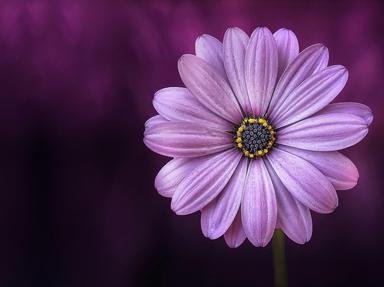Quiz Answer Key and Fun Facts
1. The flowers in this plant family have three petals, sometimes appear to have faces, are often purple, have heart-shaped leaves, and usually bloom in early spring. Some hybrids are incredibly fragrant. They are sweet, delicate, romantic flowers and they attract butterflies. What is the name of this plant family?
2. This group of butterfly plants include many ornamental and agricultural essentials and a few weeds: pole and bush beans, edible peas, the ubiquitous vetch, plus flower garden staples such as sweet peas, scarlet runner beans and hyacinth bean. Indigo (the blue dye first used to make blue jeans blue) is another member of the family. Oh, and there are trees such as acacia in this group. Name it.
3. Oats and wheat, barley and rye. No, this isn't the first line of a nursery rhyme, it's simply a short list of a type of plant that attracts butterflies. This group also includes reeds, bamboo, corn, and many representatives from our native prairies. Name it.
4. This plant is easily recognized by its long thin leaves and love of moist locales. It usually grows next to rivers and creeks. Its weeping form has been immortalized in song, poem and traditional arts. Its flexible stems have been used to weave baskets and its bark yields an aspirin-like substance.
5. These butterfly attractors have large open faces with romantic connotations. One type has coarse leaves and a 6 foot stem with large
cheerful blooms. It's often grown on the side of a barn or farmhouse or along a picket fence. Another has a long stamen protruding from the center of every bloom. It's often seen in the tropics but some forms can be grown in a temperate garden. And some members of the family occur naturally in swampy areas. Name the family.
6. A golden center surrounded by white rays -- this is the celebrity of the family. Another friendly-faced relation can reach 6-11 feet tall in one season. Many of its relatives grow along roadsides. One family member is the curse of well-groomed lawns. Another is the curse of hayfever sufferers. Another has zillions of star-like blooms in autumn. Name this dynamic family.
7. This group of plants is composed of mostly shrubs and trees that depend on butterflies as pollinators. They provide most of our soft juicy fruits: plums, peaches, apricots and cherries and one nut, the almond.
8. This plant family is known for its fast growing vines, sweet scent and attractiveness to hummingbirds, bees and butterflies. There are shrub species as well, and some are unscented.
9. Its feathery leaves provide food for caterpillars... Cocoons may be found on its stems... Members of this group include veggie favorites carrots, celery and parsnips, plus herbs like fennel, anise and parsley. Coriander, dill, caraway, chervil and angelica also have the characteristic aromatic ferny foliage and the flat-topped inconspicuous flowers. What family is beloved by caterpillars?
10. Along with the magnolias, I consider this to be one of the all-around most beautiful plant families. Its attractiveness to butterflies only
enhances its reputation. These plants are generally native to warm climates, have shiny dark green leaves, gloriously-scented pure white flowers, and very juicy, tart, sweet, brightly-colored fruits. The very popular fruits are a culinary and gastronomic necessity!
Source: Author
duracell
This quiz was reviewed by FunTrivia editor
Bruyere before going online.
Any errors found in FunTrivia content are routinely corrected through our feedback system.

